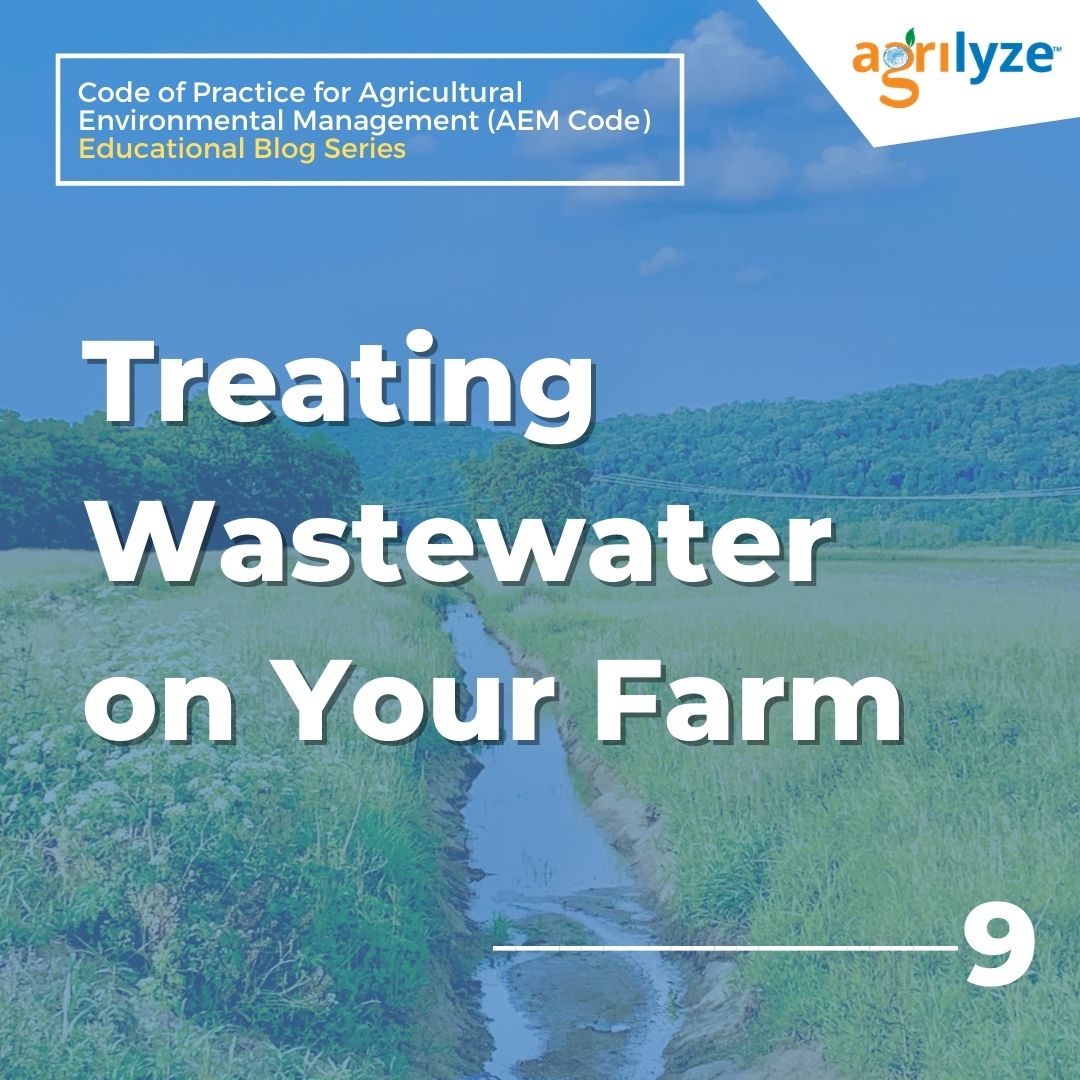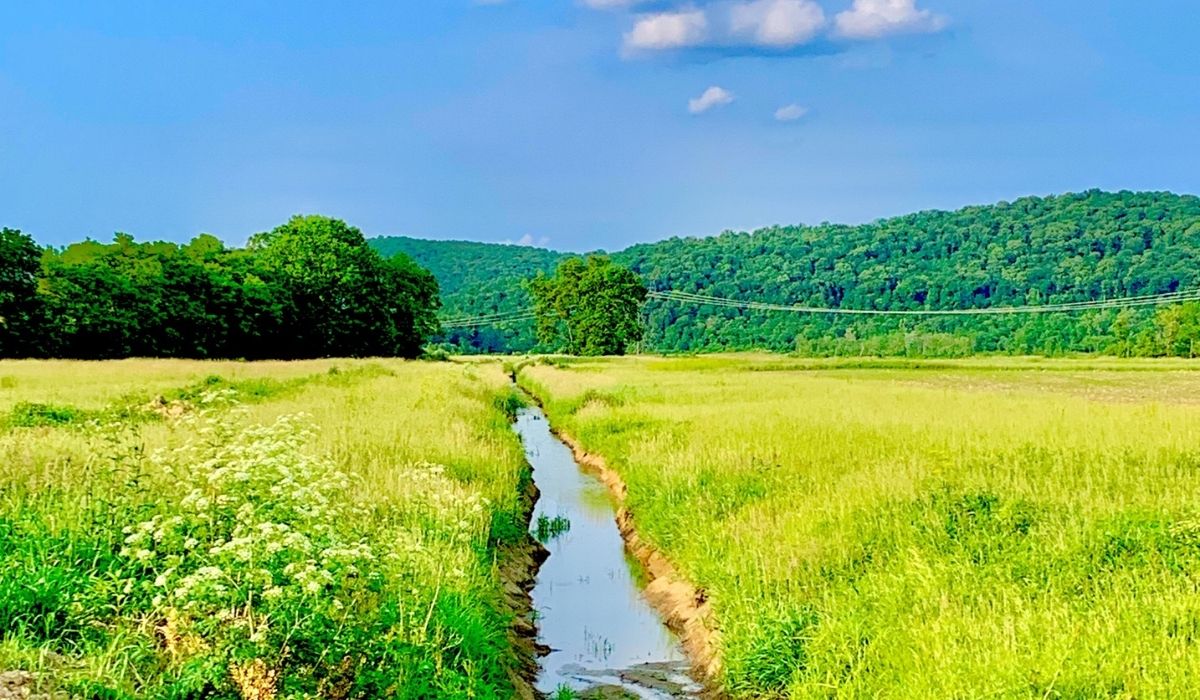Code of Practice for Agricultural Environmental Management – Treatment of Wastewater
According to the Code of Practice for Agricultural Environmental Management, you should not be discharging treated wastewater into water or on land. If you are doing this, you must notify a Director before February 28, 2021.
If your plan is to modify an existing treatment system or build a brand new one, you will need to notify a Director a minimum of 60 days before starting the project.
Pain Points
Agricultural wastewater treatment is necessary to control pollution from surface runoff that could be contaminated with pesticides, fertilizer, irrigation water, crop residues and more. Two primary forms of pollution could cause farmers concern, the first being nonpoint source pollution or pollution caused during rainstorms by surface runoff from fields. Runoff is a significant contributor to pollution, and we are going to review some main forms here –
Sediment Runoff
This is when soil is washed off from fields caused by high levels of turbidity in water bodies, and down the line, it can be detrimental to plants’ growth. There are some standard techniques that farmers can utilize to reduce runoff flows and better retain soil on the fields, such as crop rotation, contour ploughing, installing riparian buffers and crop mulching.
Nutrient Runoff
Nitrogen and phosphorus are applied to land in several ways, as industrial wastewater, animal manure or commercial fertilizer. These key pollutants may enter runoff from crop residues, wildlife, irrigation water and atmospheric deposit. By implementing a nutrient management plan, farmers can better control how runoff impacts water quality. Here are some ways:
- Being realistic with crop yield projections
- Testing soil and analyzing nutrients in manure
- Identifying other potential sources of nutrients
- Documenting and mapping fields, soil types, crop types and water bodies
- Evaluating field features like shallow aquifers, subsurface drains and highly erodible soils
- Applying precision agriculture techniques based on realistic yield goals
Pesticides
Pesticides are used to control pests on plants and enhance production, but they sometimes can cause significant water quality issues. They can appear in surface water from applying them directly to crops (i.e., aerial spraying), from runoff during rainstorms and from aerial drift coming from adjacent fields. Pesticides can also be detected in groundwater. Farmers need to use proper management techniques to control pests, reduce reliance on chemical pesticides, and ultimately protect their water quality.
The second form of pollution that may impact agricultural operations is point source pollution or pollution from livestock and poultry operations. Facilities that manage concentrated animal feeding operations are subject to increased government regulations as these larger farms can be a considerable contributor to point source wastewater. Here are some examples –
Animal Wastes
Polluting wastewaters from runoff are common from solid manure heaps left outdoors, which can be easily treated by containing or covering the heap. Of course, special handling is a must as wastewater disposal that contains animal waste can move upstream into drinking water intake. It can pose some serious threats if anyone drinks the water.
Livestock Water Pollution
Farm animal waste needs to go somewhere, and unfortunately, it isn’t treated like how we treat human waste by sending it to a plant for treatment using a sewer system. Instead, we must dispose of it by spreading the untreated manure onto land. Typically, there is too much manure, and it ends up in water sources. Before being applied to the ground, the waste can be kept in a lagoon, which creates a very toxic mix of antibiotic residues, decomposing bacteria and other chemicals that can often leach into the soil and groundwater.
How Agrilyze Can Help
- Track where manure is stored and other details about it using the Farm Map and tasks
- Track what is applied to the fields, when and how much
- Report on details of applications, therefore, managing the compliance
- Store soil and water test results over time and analyze the outcomes
- Correlate inputs and outputs to ensure that the Nutrient Management Plan is being adhered to
- Track environmental, and physical components such as soil types or aquifers or weather and relate it to manure applications
A significant change is the only way we can make a difference, but every small change is still meaningful! Farmers must consider changing their very practices, which will help decrease pollution and of course, following regulations like the AEM Code can help. Our educational blog series on the Code of Practice for Agricultural Environmental Management aims to spread awareness of the impacts of farming processes on the environment to protect our land, water, and air in BC. We hope that you’ve been learning a lot over the past ten weeks! We have our conclusion coming next week, so stay tuned!
If you have feedback about this post or would like us to explore a particular topic, please let us know by sending an email to [email protected].
Read the Code of Practice for Agricultural Environmental Management – Introduction (with infographic) – https://agrilyze.ca/code-of-practice-for-agricultural-environmental-management-introduction/



